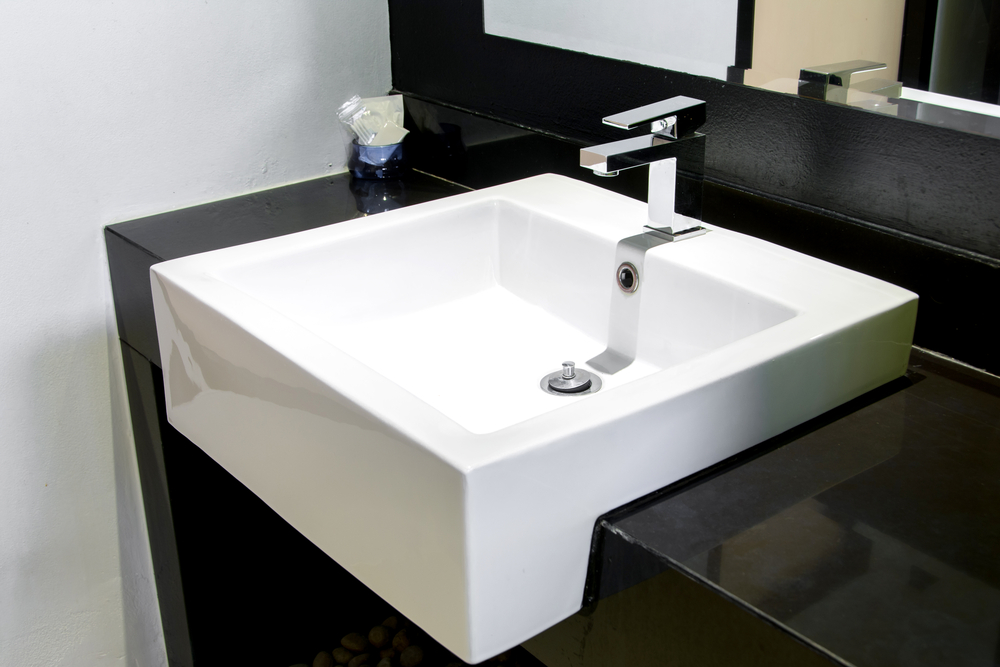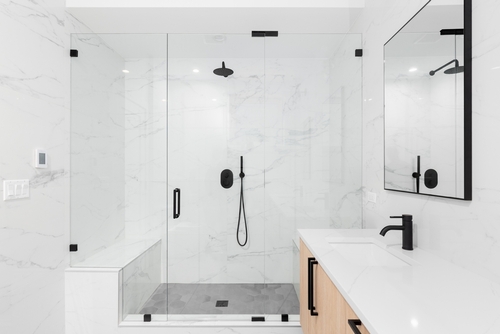
Choosing the right countertop for your porcelain bathroom sink involves considering various factors that affect both functionality and aesthetic appeal. Whether you’re renovating your bathroom or designing a new one, the countertop material plays a crucial role in defining the overall look and usability of the space. This guide will explore key considerations and options to help you make an informed decision.
Factors to Consider When Choosing a Countertop
1. Material Compatibility
One of the primary considerations when selecting a countertop for a porcelain sink is the material’s compatibility with the sink itself. Porcelain sinks are elegant and often delicate, requiring a countertop material that can support and complement its beauty without causing damage. Materials like quartz, granite, and solid surface are popular choices due to their durability and ability to withstand the weight and usage of a porcelain sink.
2. Durability and Maintenance
The durability of the countertop material is essential, especially in a high-moisture environment like a bathroom. Porcelain sinks are easy to clean but can be prone to scratches and stains if not properly cared for. Therefore, choosing a countertop that is easy to maintain and resistant to water damage, stains, and heat will ensure longevity and ease of upkeep.
3. Aesthetic Appeal
The aesthetic appeal of your bathroom should be cohesive and visually pleasing. The countertop material should complement the style of your porcelain sink, whether it’s modern, traditional, or eclectic. Consider factors such as color, texture, and pattern to create a harmonious look that enhances the overall ambiance of the bathroom.
4. Budget Considerations
Countertop materials vary widely in terms of cost, so it’s important to establish a budget early in the planning process. While natural stone like granite and marble can be more expensive, alternatives like laminate and tile offer budget-friendly options without compromising on style or functionality.
5. Installation Requirements
The installation process for your chosen countertop material should be considered to ensure compatibility with your existing bathroom layout and plumbing fixtures. Some materials may require professional installation due to their weight or complexity, while others can be installed as a DIY project with the right tools and expertise.
Popular Countertop Materials for Porcelain Sinks
1. Quartz
Quartz countertops are engineered stone surfaces that offer durability, low maintenance, and a wide range of colors and patterns. They are non-porous, making them resistant to stains and bacteria growth, which is ideal for bathroom use. Quartz countertops can seamlessly integrate with porcelain sinks to create a sleek and contemporary look.
2. Granite
Granite is a natural stone known for its strength and unique patterns. It provides a luxurious feel to any bathroom and is highly resistant to scratches, heat, and water damage. Granite countertops require periodic sealing to maintain their beauty and durability, but they offer timeless appeal and can complement various styles of porcelain sinks.
3. Solid Surface
Solid surface countertops, such as Corian, are made from acrylic or polyester resins mixed with mineral fillers. They offer a seamless appearance with integrated sinks and are available in a wide range of colors and designs. Solid surface countertops are durable, easy to clean, and can be repaired if scratched or damaged, making them a practical choice for bathrooms.
4. Marble
Marble countertops exude elegance and luxury with their distinctive veining and natural beauty. While marble is softer and more prone to scratching and staining compared to granite, it remains a popular choice for bathroom countertops due to its timeless appeal and unique character. Regular sealing and maintenance are necessary to preserve its appearance over time.
5. Laminate
Laminate countertops are a cost-effective option that mimics the look of natural stone or wood at a fraction of the cost. They are available in various colors and patterns, making it easy to find a design that complements your porcelain sink and bathroom décor. Laminate countertops are lightweight, easy to install, and resistant to stains and water damage with proper care.
Conclusion
Choosing the right countertop for your porcelain bathroom sink involves balancing practical considerations with aesthetic preferences. By evaluating factors such as material compatibility, durability, maintenance requirements, budget, and installation considerations, you can select a countertop that enhances the functionality and beauty of your bathroom. Whether you opt for the durability of quartz, the luxury of marble, or the affordability of laminate, your choice of countertop will play a significant role in defining the overall style and ambiance of your bathroom space.
Need Bathroom Remodeling Services in Glendale, AZ?
Welcome to A-1 Porcelain & Fiberglass Service Co., L.L.C.! Since 1975, we have been providing bathtub and shower refinishing services in Phoenix, AZ and the surrounding areas. Working on all bathroom fixtures, our experts will repair your tubs, showers, and sinks. We specialize in repairing cracked fiberglass tubs. We will also refinish tubs, showers, sinks, tiles, and vanities. Our happy customers also know to call us for maintenance including caulking, installation, and replacement of all bathroom fixtures. Call us today for all of your bathroom repair and refinishing needs!

Choosing a bathroom sink faucet may seem like a small decision, but it can have a significant impact on both the functionality and aesthetic appeal of your bathroom. With the wide range of options available in the market, selecting the right faucet can be overwhelming. This blog post aims to simplify the process by highlighting key factors to consider when choosing a bathroom sink faucet, ensuring you make an informed decision that suits your needs and style.
Consider the Sink Type:
The first step in choosing a bathroom sink faucet is considering the type of sink you have or plan to install. Different sink types have specific requirements for faucet installation. For instance, a countertop-mounted sink will require a faucet with a single or three-hole configuration, while a wall-mounted sink will need a wall-mounted faucet. Understanding the constraints and compatibility of your sink type will narrow down the options available to you.
Determine Mounting Style:
Once you know the sink type, you can determine the mounting style that best suits your preference and available space. The three common mounting styles for bathroom sink faucets are deck-mounted, wall-mounted, and vessel-mounted. Deck-mounted faucets are installed directly on the sink deck or countertop, while wall-mounted faucets are attached to the wall above the sink. Vessel-mounted faucets are designed for vessel sinks and are installed directly on the sink itself. Each mounting style offers a unique look and functionality, so choose one that matches your aesthetic vision and fits your bathroom layout.
Consider the Spout Reach and Height:
The spout reach and height are crucial considerations as they determine the ease of use and the amount of space required for various activities at the sink. The spout reach refers to how far the water will extend from the spout into the sink bowl. Make sure the spout reach is adequate for your sink size to avoid splashing water outside the basin. Similarly, the spout height should accommodate any objects you plan to wash under the faucet, such as your hands or a large pot. Finding the right balance between reach and height will ensure both practicality and comfort in your daily use of the sink.
Choose the Handle Type:
Bathroom sink faucets come with different handle types, including single-handle, double-handle, and touchless options. Single-handle faucets allow you to control both the water temperature and flow with one hand, while double-handle faucets have separate handles for hot and cold water. Touchless faucets use motion sensors to detect your presence and activate the water flow, offering convenience and hygiene benefits. Consider your preference, ease of use, and any specific needs when selecting the handle type for your bathroom sink faucet.
Select a Faucet Finish:
The finish of your bathroom sink faucet plays a significant role in the overall aesthetic appeal of your bathroom. Various finishes are available, including chrome, brushed nickel, matte black, bronze, and gold-tone options. The finish should complement the existing decor and fixtures in your bathroom. Additionally, consider the ease of maintenance and durability of the finish, as some finishes may require more frequent cleaning or be susceptible to scratches and tarnishing.
Consider Water Efficiency:
With increasing awareness about environmental conservation, opting for a water-efficient bathroom sink faucet is a responsible choice. Look for faucets that have the WaterSense label, indicating that they meet the Environmental Protection Agency’s criteria for water efficiency and performance. Water-efficient faucets can save both water and money over time by reducing water consumption without compromising performance. Consider flow rate, aerator technology, and any optional features like spray settings to ensure you choose a faucet that aligns with your sustainability goals.
Set a Budget:
Lastly, it is essential to establish a budget for your bathroom sink faucet. Faucet prices can vary greatly depending on the brand, style, material, and features. Determine a price range that you are comfortable with and focus on finding options within that range. While it is wise to invest in a high-quality faucet that will last, it is also possible to find stylish and functional faucets at more affordable price points. Remember to consider the long-term durability and warranty coverage when making your final decision.
Summary:
Choosing a bathroom sink faucet involves considering various factors, including the sink type, mounting style, spout reach and height, handle type, faucet finish, water efficiency, and budget. By assessing these factors and finding the right balance between functionality and aesthetics, you can select a faucet that enhances the overall look and usability of your bathroom. Whether you prefer a traditional, modern, or transitional style, there is a wide range of options available to suit your personal taste and meet your specific needs. Take your time, explore different options, and consult with bathroom refinishing professionals if needed to ensure you make a well-informed choice for your bathroom sink faucet.
Need Bathtub & Shower Repairs and Refinishing in Glendale, AZ?
Welcome to A-1 Porcelain & Fiberglass Service Co., L.L.C.! Since 1975, we have been providing bathtub and shower refinishing services in Phoenix, AZ and the surrounding areas. Working on all bathroom fixtures, our experts will repair your tubs, showers, and sinks. We specialize in repairing cracked fiberglass tubs. We will also refinish tubs, showers, sinks, tiles, and vanities. Our happy customers also know to call us for maintenance including caulking, installation, and replacement of all bathroom fixtures. Call us today for all of your bathroom repair and refinishing needs!


